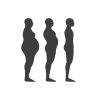- Empty cart.
- Continue Shopping
How the Body Processes Vitamins

Vitamins are essential nutrients that play a crucial role in maintaining optimal health. However, the body’s ability to process these vitamins is a complex and fascinating process that many people may not fully understand.
Types of Vitamins: Water-Soluble and Fat-Soluble
Before diving into the mechanics, it’s important to distinguish between the two main types of vitamins: water-soluble and fat-soluble.
Water-Soluble Vitamins
These include Vitamin C and the B-complex vitamins. Water-soluble vitamins dissolve easily in water and are generally excreted quickly through urine. They need to be consumed more frequently to maintain adequate levels in the body.
Fat-Soluble Vitamins
Vitamins A, D, E, and K fall under this category. Unlike their water-soluble counterparts, fat-soluble vitamins are stored in the liver and fatty tissues. They are absorbed more effectively when consumed with dietary fats.
Absorption: The First Step
The journey of vitamins begins in the digestive system. When you consume foods rich in vitamins or take vitamin supplements, the nutrients first reach your stomach.
Water-Soluble Vitamins
For water-soluble vitamins, the absorption process is relatively straightforward. The stomach acid helps break down the food, and the vitamins are absorbed directly into the bloodstream through the walls of the small intestine.
Fat-Soluble Vitamins
Fat-soluble vitamins require a bit more work. They are first emulsified with dietary fats in the small intestine. Then, they are absorbed into the lymphatic system before entering the bloodstream.
Metabolism: The Conversion Process
Once absorbed, vitamins undergo metabolism to convert them into a form that the body can use.
Activation
Some vitamins, like Vitamin D, need to be activated by the liver and kidneys before they can be utilized. This involves a series of enzymatic reactions that transform the vitamin into its active form.
Storage and Release
Fat-soluble vitamins are stored in the liver and fatty tissues for future use. When needed, they are released into the bloodstream. On the other hand, excess water-soluble vitamins are usually excreted, as the body has limited storage capacity for them.
Utilization: The Final Stage
After metabolism, vitamins are transported to various cells and tissues where they perform their specific roles.
Coenzymes and Cofactors
Many vitamins act as coenzymes or cofactors, aiding in various biochemical reactions. For example, Vitamin C is essential for collagen synthesis, while B vitamins help in energy production.
Hormonal Functions
Some vitamins, like Vitamin D, function as hormones. They bind to specific receptors in target cells and regulate various physiological processes, such as calcium absorption in the intestines.
Conclusion
Understanding how the body processes vitamins is essential for making informed decisions about your diet and supplementation. The body’s ability to absorb, metabolize, and utilize these nutrients is a complex but well-coordinated process that ensures you get the most out of the vitamins you consume.
By being aware of the different types of vitamins and how they are processed, you can tailor your nutritional intake to better suit your body’s needs. Whether it’s choosing foods rich in specific vitamins or deciding on the right supplements, a deeper understanding of this topic can contribute to a healthier, more balanced lifestyle.
So, the next time you reach for that vitamin supplement or plan your meals, remember the incredible journey these essential nutrients take to keep you healthy and thriving








